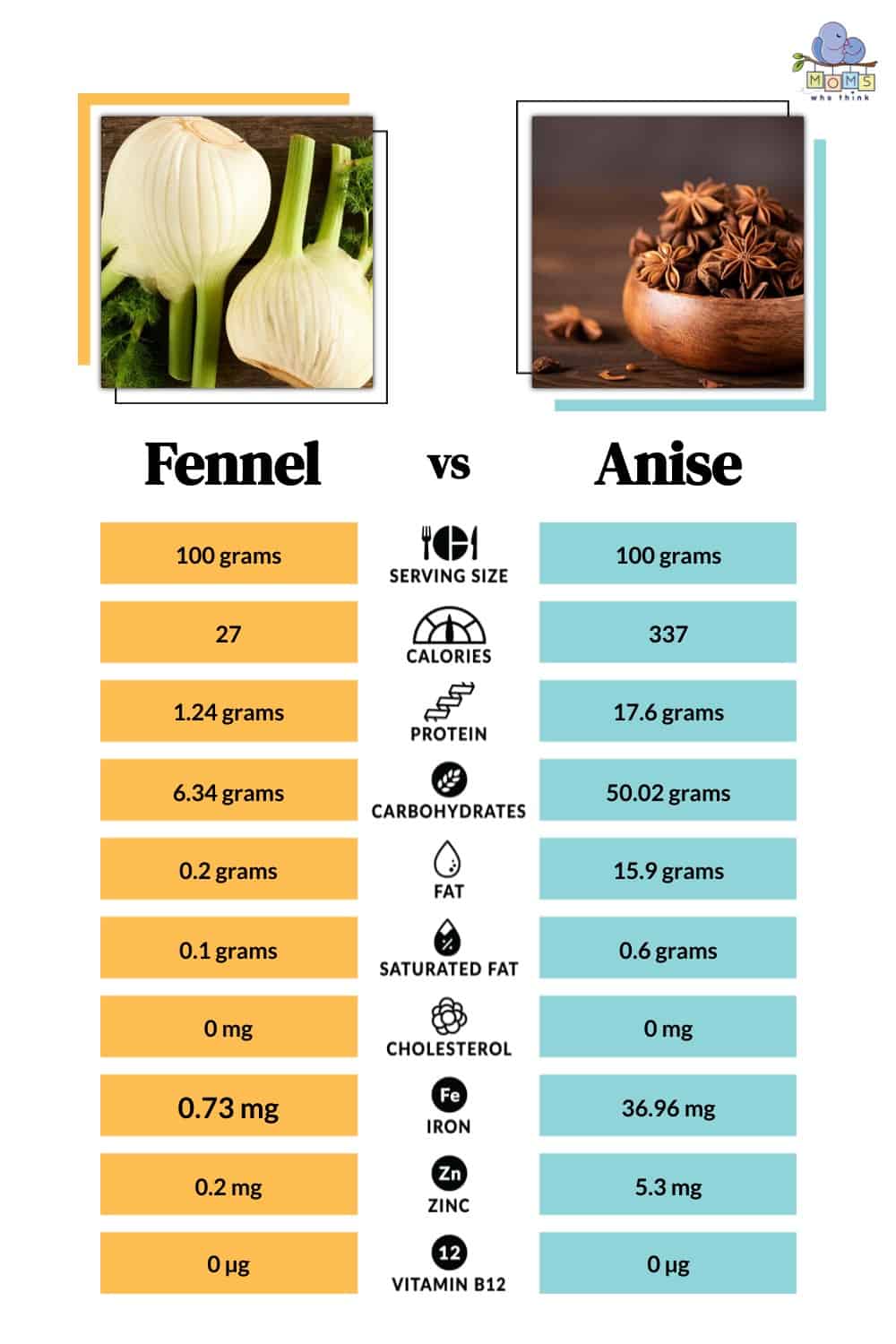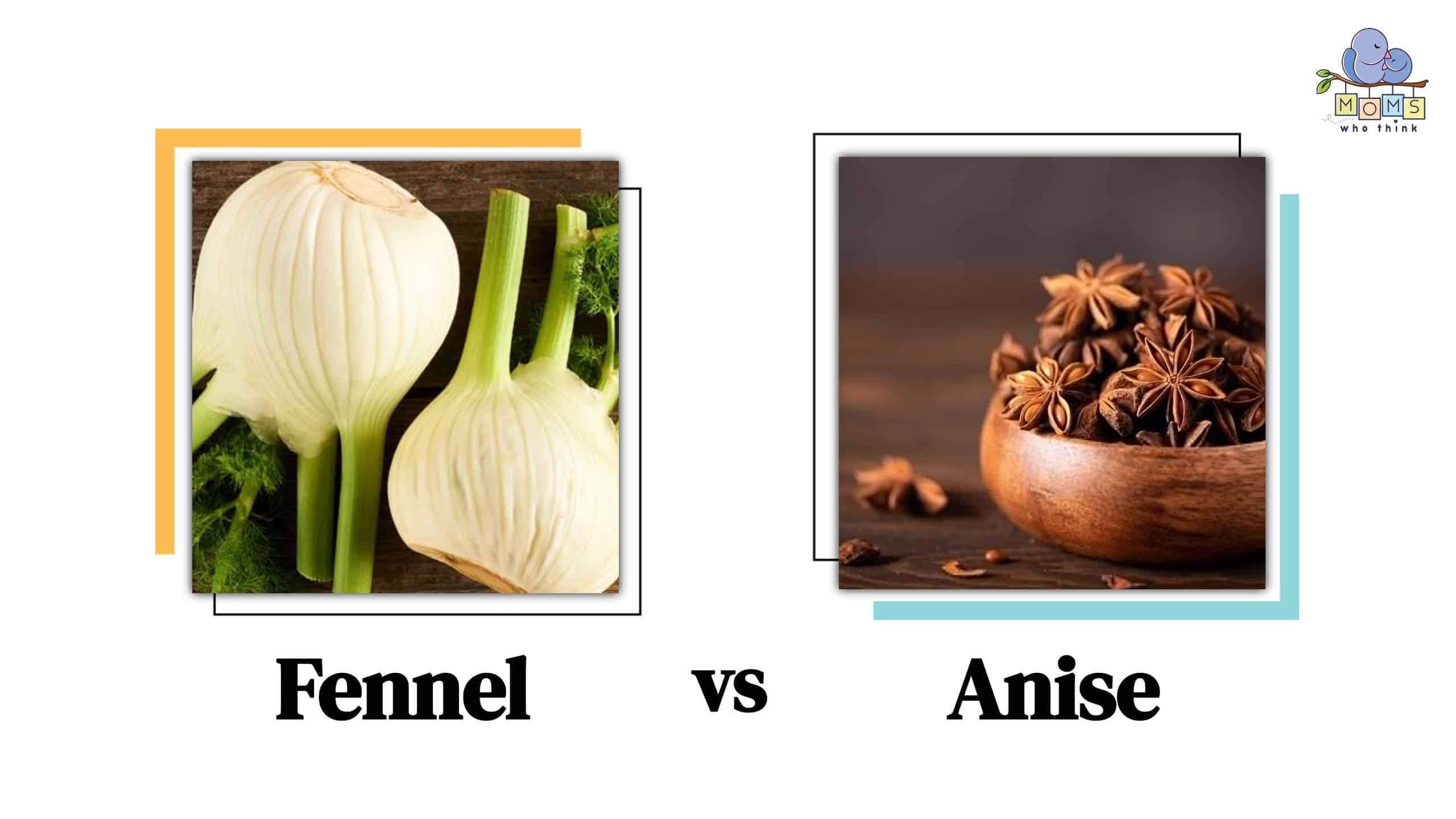When it comes to adding a touch of licorice-like flavor to your culinary creations, fennel and anise are two herbs that often come to mind. While these herbs share some similarities, they possess distinct characteristics that set them apart. Understanding the key differences between fennel and anise is essential for harnessing their unique flavors in the kitchen.
In this article, we will explore six key differences between fennel and anise and provide guidance on when to use each herb. Whether you're a seasoned chef or a passionate home cook, this knowledge will help you create dishes that showcase the distinct flavors of these aromatic herbs.
1. Fennel vs. Anise: Plant Type
Fennel and anise are two herbs that share a licorice-like flavor, but they have distinct differences. One key difference lies in their plant types. Fennel is a perennial plant, while anise is an annual plant. Fennel plants grow taller and have more delicate leaves compared to anise plants. Also, fennel is often used as a vegetable, with its bulb, fronds, and seeds being edible, while anise is primarily used as a spice. Understanding these plant-type differences can help in determining the appropriate use of fennel and anise in various healthy meals.
2. Fennel vs. Anise: Flavor Intensity
When comparing the flavor intensity of fennel and anise, it is important to note that anise has a more powerful and pungent licorice flavor compared to fennel. Fennel, on the other hand, offers a milder licorice flavor that is less sweet and not as intense as anise. The intensity of the flavor can vary from plant to plant, but overall, anise tends to have a stronger licorice taste. Roasting fennel can mellow its intensity, making it a versatile ingredient that complements the flavors of various dishes. Understanding the flavor intensity of fennel and anise can help in determining the appropriate use of each herb in different culinary creations.
3. Fennel vs. Anise: Taste Profile
When it comes to the taste profile of fennel and anise, both herbs share a licorice-like flavor due to the presence of anethole, an essential oil found in their seeds However, they do have slightly different taste profiles. Fennel has a sweet, delicate flavor with a hint of licorice, while anise has a stronger and more pronounced licorice flavor.
The taste of fennel is often described as milder and less intense compared to anise. It's important to note that fennel seeds, with their more pungent flavor, are often used in hearty, slow-cooked dishes, while anise seeds are commonly used in spice blends and baked goods. Understanding the taste profiles of fennel and anise can help in selecting the appropriate herb for specific culinary applications.
4. Fennel vs. Anise: Height and Leaf Appearance
Fennel and anise differ in terms of their height and leaf appearance. Fennel plants can grow up to 6 feet tall, although they are often shorter than that. They have smooth, dark green leaves that are finely dissected with very narrow lobes, giving them a feathery appearance similar to dill. Fennel plants also produce a deep, large white taproot. On the other hand, anise is an annual herb that reaches a height of about 2 feet.
Anise leaves have a different appearance compared to fennel, given their distinct plant characteristics. The lower leaves at the base of the plant are simple, while the leaves higher on the stems are more feathery or lacy, pinnate, and divided into numerous small leaflets. The leaves are typically green in color and have a delicate and attractive appearance.
5. Fennel vs. Anise: Culinary Substitution
When it comes to culinary substitution between fennel and anise, there are some possibilities, but it's important to note that the flavor profiles of these two herbs are not identical. Here are some considerations:
Fennel as a substitute for anise:
Fennel can be used as a substitute for anise in certain recipes. Fennel seeds have a similar licorice-like flavor to anise seeds, although they are milder. You can generally use fennel seeds in place of anise seeds in recipes that call for them.
Fennel fronds as a substitute for dill:
Fennel fronds, which are the feathery leaves of the fennel plant, can be used as a substitute for dill in some recipes. Fennel fronds have a subtle licorice flavor that is reminiscent of dill. They can be used in marinades, salads, and even with fish dishes.
Tarragon as a substitute for fennel:
Tarragon can be used as a substitute for fennel in certain recipes, although the flavor profiles are not identical. Tarragon has a distinct anise-like flavor that can provide a similar aromatic note to dishes that call for fennel.
Anise as a substitute for fennel:
Anise can be used as a substitute for fennel in some recipes, especially when it comes to the seeds. Anise seeds have a stronger licorice flavor compared to fennel seeds, so you may need to use them sparingly to avoid overpowering the dish.
It's important to keep in mind that while these substitutions can work in certain recipes, they may not provide an exact flavor match. The best approach is to experiment and adjust the quantities based on personal taste preferences.
6. Fennel vs. Anise: Nutritional Value

Fennel and anise are two plants that share a similar licorice flavor, but they have some differences in terms of nutritional value. Here's what we know:
Fennel:
- Fennel is a vegetable that belongs to the carrot and celery family.
- It is low in calories but high in nutrients like dietary fiber, potassium, and vitamin C.
- Fennel is a good source of fiber, with 1 cup (87 grams) of raw fennel bulb providing 3 grams of fiber, which is 11% of the Daily Reference Value (DRV). Diets high in fiber have been associated with a reduced risk of heart disease.
- Fennel also contains nutrients like magnesium, potassium, and calcium, which play important roles in keeping your heart healthy.
Anise:
- Anise is primarily used as a spice to add flavor to various dishes.
- It is high in antioxidants, which can reduce inflammation and prevent disease-causing oxidative damage.
- Anise seed is generally safe for most people to consume, but it could trigger an allergic reaction, especially in individuals allergic to plants in the same family, such as fennel, celery, parsley, or dill.
- Anise has estrogen-mimicking properties that could worsen symptoms of hormone-sensitive conditions like breast cancer or endometriosis. If you have a history of these conditions, it's advisable to consume anise in moderation and consult with your doctor.
Fennel vs. Anise: When to Use Each
When deciding whether to use fennel or anise in your culinary creations, it's important to consider their flavor profiles and primary uses:
Fennel:
Fennel has a sweet, delicate flavor with a hint of licorice. It is commonly used in both raw and cooked dishes. Fennel bulbs can be sliced and used in salads, roasted as a side dish, or braised in soups and stews. Fennel seeds are often used as a spice in various cuisines, including Mediterranean and Indian dishes. They can be used in spice blends, marinades, and baked goods.
Anise:
Anise has a stronger and more pronounced licorice flavor compared to fennel. It is primarily used as a spice. Anise seeds are commonly used in baking, particularly in cookies, cakes, and bread. They are also used in spice blends like Chinese five-spice powder and Indian panch phoran. Anise extract or oil is used to flavor beverages, such as anise-flavored liqueurs like ouzo and absinthe.
While fennel and anise share a similar licorice flavor, their intensity and sweetness differ. Fennel is milder and less sweet, while anise is more pungent and intense.
In Conclusion
In conclusion, fennel and anise may share a licorice-like flavor, but they do have distinct differences that make them suitable for different culinary applications. Fennel offers a sweet, delicate flavor and can be utilized in both raw and cooked dishes. Its bulbs, fronds, and seeds bring a unique touch to salads, roasted dishes, and spice blends. On the other hand, anise boasts a stronger, more pronounced licorice flavor, making it ideal for baking and flavoring beverages. Anise seeds and extracts lend their distinct taste to cookies, cakes, bread, and various traditional drinks.
Understanding these key differences empowers cooks to make informed choices when selecting between fennel and anise, ensuring that the flavors of their dishes harmonize perfectly. So, whether you're seeking a milder touch or a bolder punch of licorice, fennel and anise are able to elevate your culinary creations.

